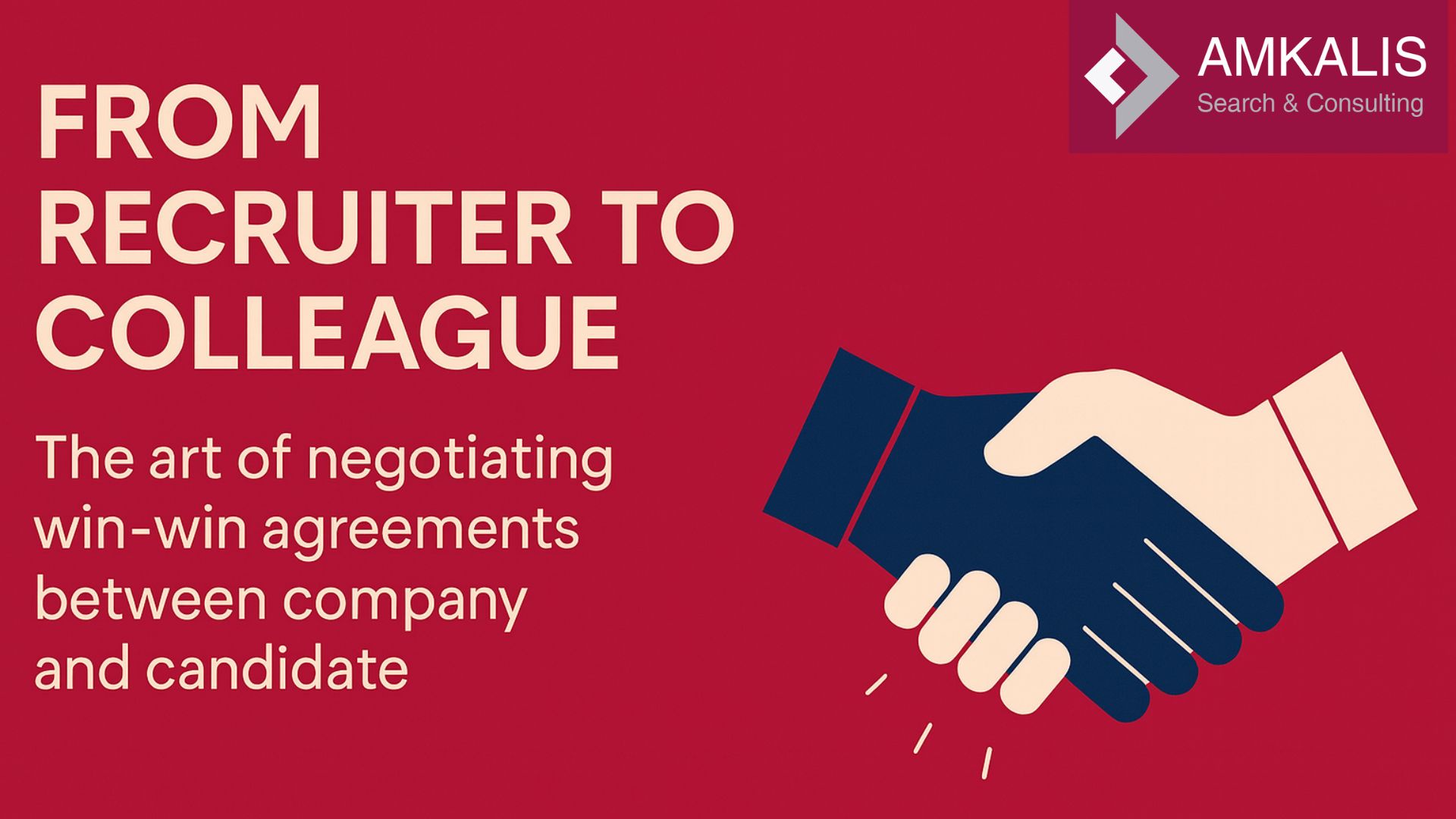The modern recruiter is no longer a simple middleman between company and candidate. Their role has evolved into that of a strategic facilitator, capable of building trust bridges and turning negotiation into sustainable agreements. For executives, the recruiter represents the voice of the market; for candidates, a partner who safeguards their interests. The challenge is designing win-win agreements, where both sides feel they have gained.
The recruiter’s new role at the negotiation table
Today’s recruiter is not only about numbers:
- Translates interests into value: converts personal aspirations into tangible proposals.
- Mediates between opposing visions: prevents company and candidate from locking into rigid positions.
- Strengthens credibility: provides market benchmarks and case references.
- Builds trust: by showing transparency and reducing resistance.
This shift from recruiter to colleague redefines the dynamic: from someone who “places” talent to someone who builds long-term strategic relationships.
Keys to achieving win-win outcomes
- Thorough preparation
Understand both company and candidate in depth: motivations, limits and realistic expectations. - Focus on interests, not positions
Companies seek impact and continuity; candidates seek growth and recognition. Win-win outcomes come from discussing interests, not just salaries. - Expand the negotiation value
Beyond money: strategic projects, leadership opportunities, sector visibility, succession planning can all be on the table. - Build trust through transparency
Recruiters should clarify what can and cannot be offered, preventing unrealistic expectations. - Close with objective metrics
Agreements anchored in measurable criteria reduce the likelihood of future disputes.
Common mistakes
- Overloading negotiation with irrelevant details.
- Failing to prepare fallback alternatives.
- Ignoring emotional dimensions of executives and candidates.
- Positioning as a transactional agent instead of a trusted ally.
Measuring success
- Satisfaction level of both parties after six months.
- Fulfilment of agreed commitments.
- Continuity of the company-candidate relationship.
- Feedback on the recruiter’s role as mediator.
Conclusion
The real art of negotiation in headhunting is evolving from recruiter to colleague: a strategic partner helping both sides reach strong, lasting and mutually beneficial agreements. Recruiters who master this role not only close processes but build trust-based relationships that become a competitive advantage.
Sources used, apart of our own experience
- Harvard Business Review – Become a Better Negotiator: org
- Forbes – 20 Effective Negotiation Strategies From Top Business Experts: com
- Join Pavilion – Executive Compensation Negotiation Tactics: com
- Harvard PON – Better Tools for Negotiating with Goliaths: harvard.edu



